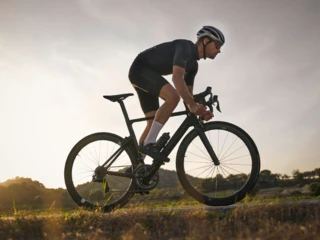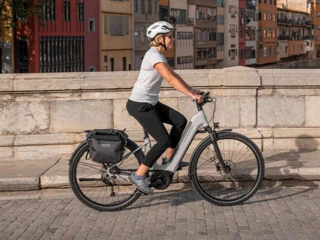Latex or TPU – Which Tube is Better?
Veröffentlicht am
Latex or TPU? Here you’ll find all the important differences between the two types of tubes and which one is right for you.

For over 130 years, the butyl rubber tube, has established itself as the material of choice for bicycle tubes. In recent years, however, butyl has been facing increasing competition from various manufacturers.
The competitors in the race to determine which system is best for cyclists are:
- Latex tubes
- TPU tubes
- Tubeless systems
If you want to learn more about the individual systems, feel free to read our introductory text on TPU bicycle tubes or our comparisons of the respective systems.
Bicycle Tubes Made of TPU (Thermoplastic Polyurethane)
Recently, TPU has been gaining more and more attention in the bicycle industry. TPU combines the high durability of plastic with the elasticity of rubber, making it the ideal material for applications that require repeated bending or compression. Due to its elasticity, TPU is often used as an impact modifier in products such as helmets, protective packaging, vibration-damping products, or seals/gaskets.
All the previously mentioned properties and material properties make TPU perfect for the production of bicycle tubes. Additionally, TPU tubes can be custom-made. Depending on the requirement, they can be manufactured with multiple layers, equipped with more or less puncture protection, and even produced in any color.
The advantages of this new material compared to conventional butyl are numerous. Here they are summarized:
- Lighter
- Function with less air pressure
- Better puncture protection (against punctures and snake bites)
- Better rolling resistance
- Easier to install
- Smaller packed size; perfect as a spare tube
- Less air loss
- Heat resistant even with rim brakes
- More sustainable
Bicycle Tubes Made of Latex
Latex tubes are – as the name suggests – made from natural latex. Latex tubes are known for their excellent performance, i.e., very low rolling resistance, and good riding comfort. They are also inherently lighter than their butyl counterparts, making them a popular choice for road cyclists or even those who want a high performance ride with their road bike.
Here are the advantages summarized:
- Lighter than butyl
- Better riding feel
- Lower rolling resistance
Do Latex Tubes Have Disadvantages?
Yes, they do. A major disadvantage, as shown by practical tests, is that the tires lose air faster compared to other systems than standard tubes. Therefore, cyclists need to pump up their tires more often, or before every longer ride, whether on the road or gravel, which can be annoying in everyday life.
They are also more prone to punctures and can be easily damaged if handled improperly.
Finally, latex tubes are more expensive than butyl tubes. Ultimately, it can be said that latex bicycle tubes are an excellent choice for road cyclists who favor performance and comfort.
System Comparison
We can conclude that conventional butyl bicycle tubes are no longer state of the art – too heavy, too air-permeable, too slow, prone to punctures, difficult to recycle.
When it comes to puncture protection, latex tubes are not really competitive either. They seem to be more suitable when pure performance, i.e., rolling resistance, comes into play. As road bike tubes for racing, they make sense. In terms of puncture protection, tubeless systems have been far ahead in recent years. Those who ride MTB or gravel bikes want to get through the terrain safely, i.e., without punctures.
However, the rather difficult installation with sealant deters many cyclists from using tubeless. Often, clincher rims and tires do not fit together well, and it can also be annoying when the valve inserts become clogged with sealant over time, making it difficult to remove the valve core by hand or to inflate the tire even with the valve open because the valve passage is clogged. This is where TPU tubes come into play.
Let's talk about the individual requirements:
Rolling Resistance
Puncture Protection
Weight
In summary, it can be said that TPU is the material that is the future of the bicycle tube market. In all parameters, the material properties excel, often even leading alternative options. Specifically, in comparison with latex, AERON/TPU Airbubes made of TPU are only slightly less in terms of rolling resistance. What latex tubes cannot do at all is everyday use and rough terrain; they are simply too delicate for that. If we also consider that AERON/TPU Airtubes are also available in the "SuperLite Race" version for performance-oriented road cyclists, then TPU ultimately emerges as the clear winner in the system comparison with latex tubes.
If you want to know more about AERON/TPU Airtubes and the AERON/TPU range, click here.



